Any Porsche enthusiast will know the iconic 911 comes in many flavors, including limited editions like the the Turbo 50 Years, Dakar and recent S/T. These exclusive models combine outstanding design, special drive and chassis components, and individual equipment details to create a unique product and driving experience. Special production processes and steps are required to produce the limited-edition 911 models at Zuffenhausen. The construction of the limited-edition 911 models combines the highest levels of exclusivity and manufacturing precision with the art of personalization.
In addition to a highly automated body shop and a regular assembly line, Porsche also employs up to three Manufaktur stages: the Exclusive Manufaktur, the Sonderwunsch department, and the carbon fiber Manufaktur. Another special feature is the in-house saddlery, where the employees – who are largely self-taught – apply the model-specific leather, Race-Tex and textile covers. Limited-edition models with two-tone paintwork, such as the 911 Dakar, are painted by hand in the Manufaktur tradition. One characteristic of 911 construction in Zuffenhausen is that all variants and derivatives are produced on a single production line – from the Carrera to the limited-edition models and the racing cars for the worldwide Porsche Carrera Cups.
Rich Manufaktur tradition
“Exclusive 911 models such as an S/T or Dakar represent the pinnacle of the available variants of our sports car icon. On the one hand, they continue the Manufaktur tradition of historic sports cars such as the Porsche 356. On the other, they also symbolize our customers’ dreams, dreams that we fulfill here as Porsche Production,” says Albrecht Reimold, Member of the Executive Board, Production and Logistics at Porsche AG.
“In the production process of the 911 models, the Zuffenhausen plant combines the strengths of automated production with the advantages of an automobile Manufaktur in a unique way,” explains Vice President Plant Zuffenhausen Jens Brücker. “The limited-edition 911 models are a special opportunity to showcase our automotive craftsmanship. The different Manufaktur stages in the plant mean we can make the exclusive 911 models truly unique.”
In the case of the limited-edition 911 models, the manual assembly steps,, in particular,, make the difference: production in the Exclusive Manufaktur takes us from the application of special leather and fabric covers in the interior to refinement by means of various trims and decorative elements in the exterior, and even individually personalized design elements. In the Sonderwunsch Manufaktur, even the most unusual wishes become reality – right up to the production of one-of-a-kind items.
The production process of the 911 Turbo 50 Years
As with the regular sports car icon versions, the limited-edition 911 Turbo 50 Years production also begins in the highly automated body shop. The body-in-white is assembled there with the help of around 300 robots. The subsequent vehicle assembly stages are also similar to the standard process, i.e.: drive and chassis components as well as electronic and electrical parts are installed on the same assembly line.
One example of where the process may differ is when the car reaches the saddlery. There, tartan fabric covers and leather features – similar to those in the original 1974 Turbo –applied to specific interior parts. After the ‘marriage’, which is where the powertrain and body are joined together on the main assembly line, Zuffenhausen’s exclusive two-door cars go through the final assembly steps until they reach their final inspection in the testing and finish center.
The future owners of limited-edition 911 models are keen to personalize their cars. This takes place after the actual production process in one of the sports car manufacturer’s two finishing departments: the Exclusive Manufaktur and the Sonderwunsch Manufaktur.
Rounding off unique automobiles – The Exclusive Manufaktur
The refinement of Porsche models in the Exclusive Manufaktur is mainly carried out by applying elaborate craftsmanship. Customers can choose from around 1,000 options. For example, there are decor variants or different packages, such as the Heritage Design Package for the 911 S/T or the Rally Design Package for the 911 Dakar.
With various color, material and equipment variants for the exterior and interior, there are countless possibilities to refine one’s Porsche. These also include exterior decorative elements for bonnets, doors and side panels or additional leather, Race-Tex and fabric features for the interior – for example, for the center console or the air conditioning vents.
The employees manually apply individual details, such as the number of decals on the doors or various leather trims on the dashboard at the transition to the doors. Conspicuous details such as ground projection spotlights in the doors with labels such as the ‘Icons of Cool’ logo of the Heritage Design Strategy also give the coveted 911 models an even more individual touch. On average, a personalized 911 spends up to six days in the Exclusive Manufaktur.
A limited-edition 911 from the Sonderwunsch Manufaktur
A future owner who wants to turn their already rare limited-edition 911 into a one-of-a-kind model can use the sports car manufacturer’s Sonderwunsch program. There are also many options in terms of colors and materials in what is referred to as Factory Commissioning. However, the focus is even more on the construction of one-of-a-kind cars. There are hardly any limits to the creativity and imagination of customers and designers – as long as they meet the high Porsche quality standards and applicable regulatory requirements.
The 911 Dakar designed for an Italian customer is a prime example of a limited-edition model that was further personalized and refined in the Sonderwunsch Manufaktur. The unique character of this special Dakar is reflected in its three-tone finish: the colors Signal Yellow and Gentian Blue Metallic are reminiscent of the Rally Design Package, which calls to mind the winning car at the Paris-Dakar Rally. The design line, which, on this collector’s item, is also painted, separates the two-color blocks. The line is painted Lampedusa Blue. During the preparations for the painting process, the owner applied the tape himself.
The spokes of the light-alloy wheels are also painted in Signal Yellow, while Lampedusa Blue is used for the rim flange. The paintwork was done completely by hand. A Lampedusa Blue accent ring personalizes the LED matrix design headlights. The stainless-steel protective elements on the front, rear and sills are Black. The yellow theme is repeated in the interior as a contrast color to Black – appearing in the contrast seams and on the trim strips of the dashboard, center console, and door panel trim. The lettering ‘911 Dakar’ is embroidered with Speed Yellow thread into the headrests of the Sport Seats Plus. The aluminum selector lever for the eight-speed Porsche dual-clutch transmission (PDK) is enhanced by a Speed Yellow leather inlay.
The carbon fiber Manufaktur for purist 911 variants
Limited-edition models with a special focus on lightweight construction go through an additional production step during car assembly in the main plant: the carbon fiber Manufaktur. Almost all add-on parts for purist 911 variants, such as the S/T or GT models, are assembled manually away from the regular assembly line. To facilitate this, the painted body-in-white is clamped onto special assembly carriages on which all add-on parts made of carbon are then mounted – for example, the doors, the bonnet and the wings of the special-edition 911 that weighs in at just 1,380 kilograms. Each carbon component is clamped into special screw frames and is adjusted manually during the assembly process to ensure accurate fits and clearances. Once all parts of the outer skin have been assembled, the now complete body returns to the regular assembly line.
Setting us apart from other OEMs: the Porsche saddlery
In contrast to many other automotive OEMs, Porsche has its own saddlery at the Zuffenhausen plant. Here, almost all interior surfaces made of leather, Race-Tex or fabric are cut, sewn and applied. Cutting is done using an automatic waterjet cutter. The covers are sewn and prepared for the subsequent lining process in the sewing area. To guarantee its high-quality standards, Porsche is one of the few manufacturers to rely on its own training course to provide car interior designers.
Two-tone manually finished paintwork for the 911 Dakar
The paintwork of the 911 Dakar models with the Rallye Design package differs from the regular painting process and has a special unique selling point: if future owners of a 911 Dakar choose the Rally Design Package, they will receive the two-tone paintwork in White/Gentian Blue Metallic with decorative stripes in gold/red. After applying the White undercoat, the employees manually apply the blue contrast paint to the car’s body. Manual painting takes approximately seven and a half hours.
The undercoat is sanded by hand, masked, then the paint is applied by hand in Gentian Blue Metallic. For this manual painting process, new work processes and areas were established before production, including a so-called multi-line for the manual paint application. Finally, the finishing touches are added in the Exclusive Manufaktur, where the employees apply the decorative films for the characteristic red and gold dividing strips by hand.
Above content © 2024 Dr. Ing. h.c. F. Porsche AG reviewed and edited by Rex McAfee


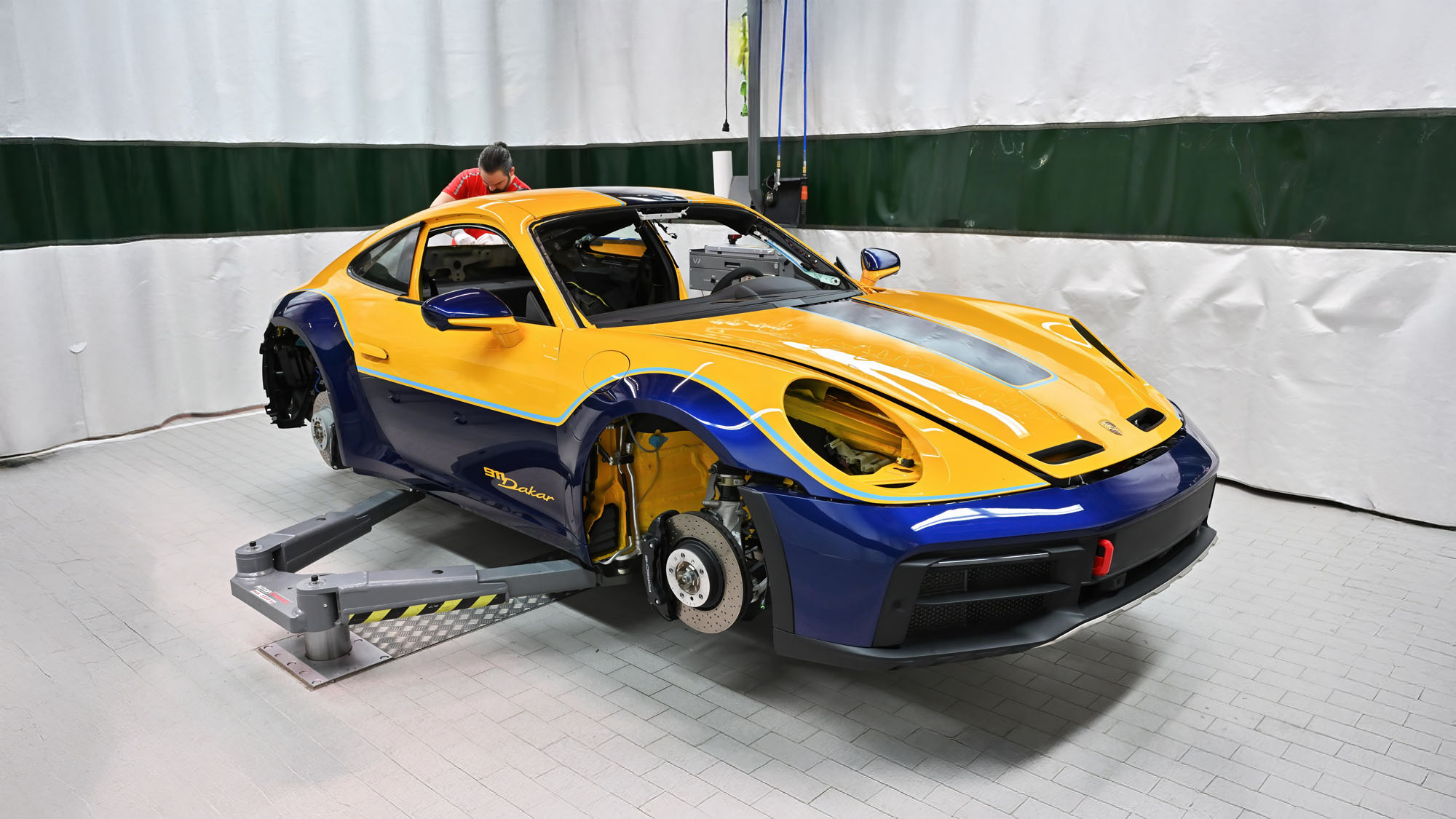
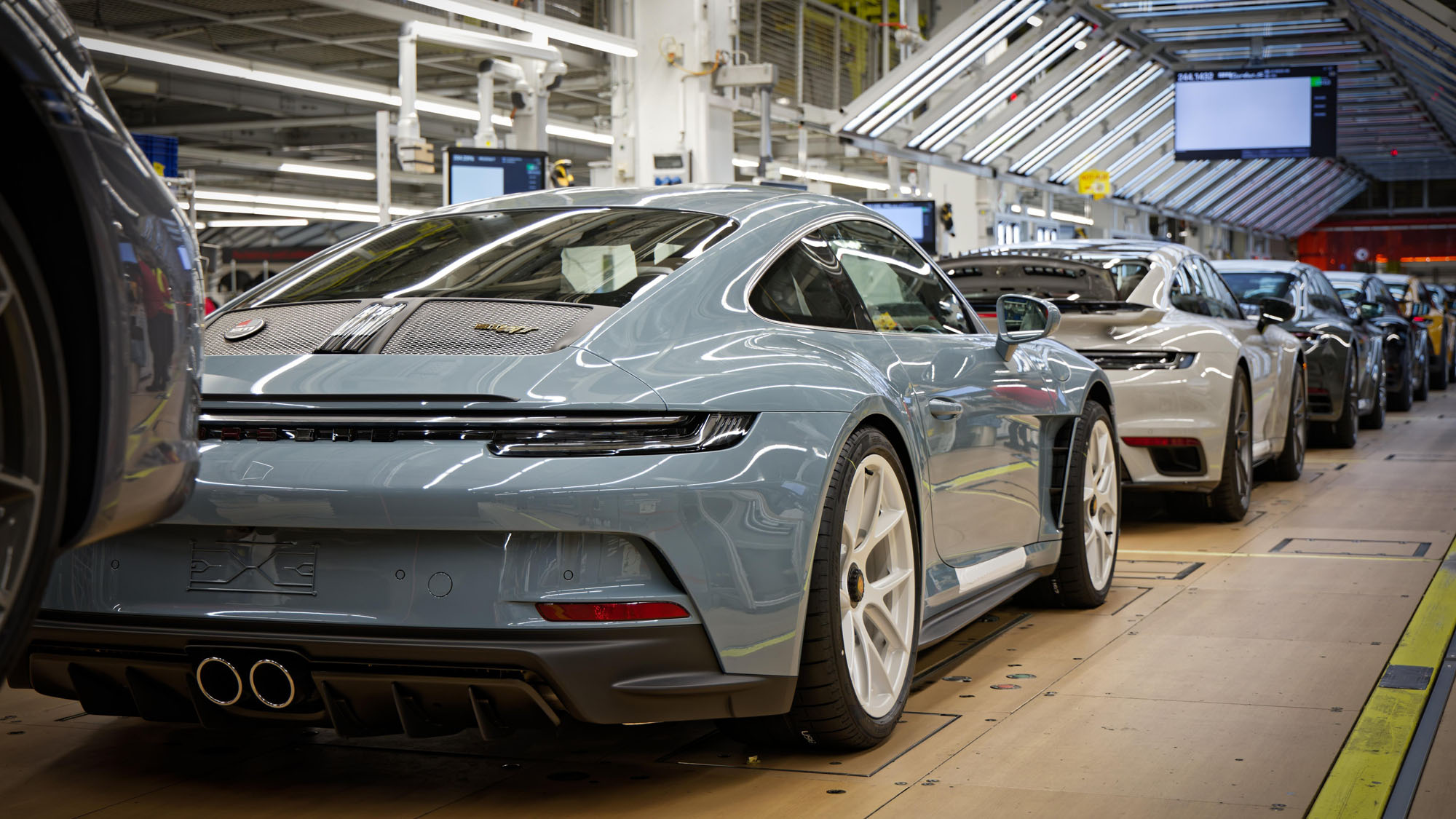

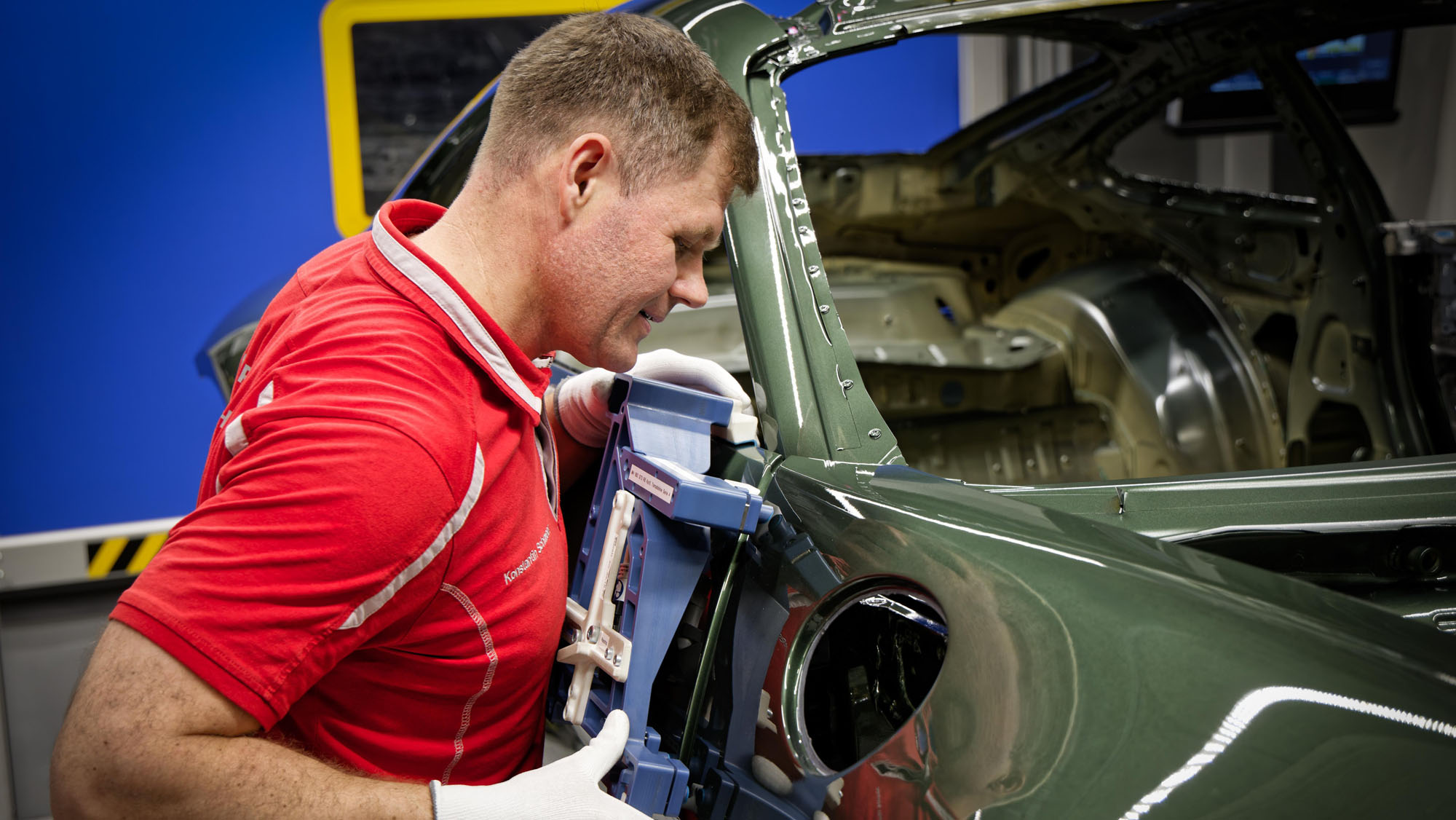


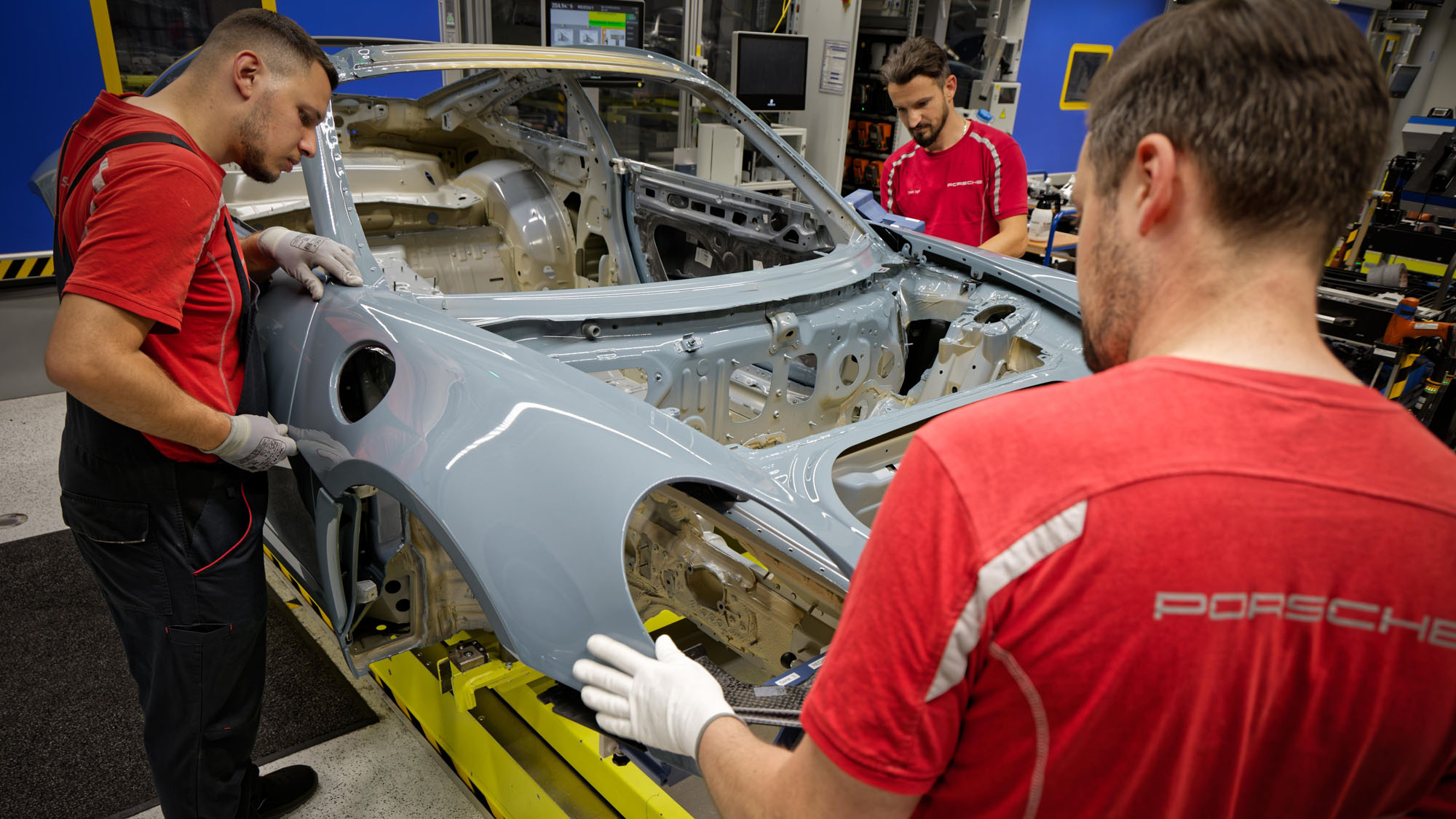
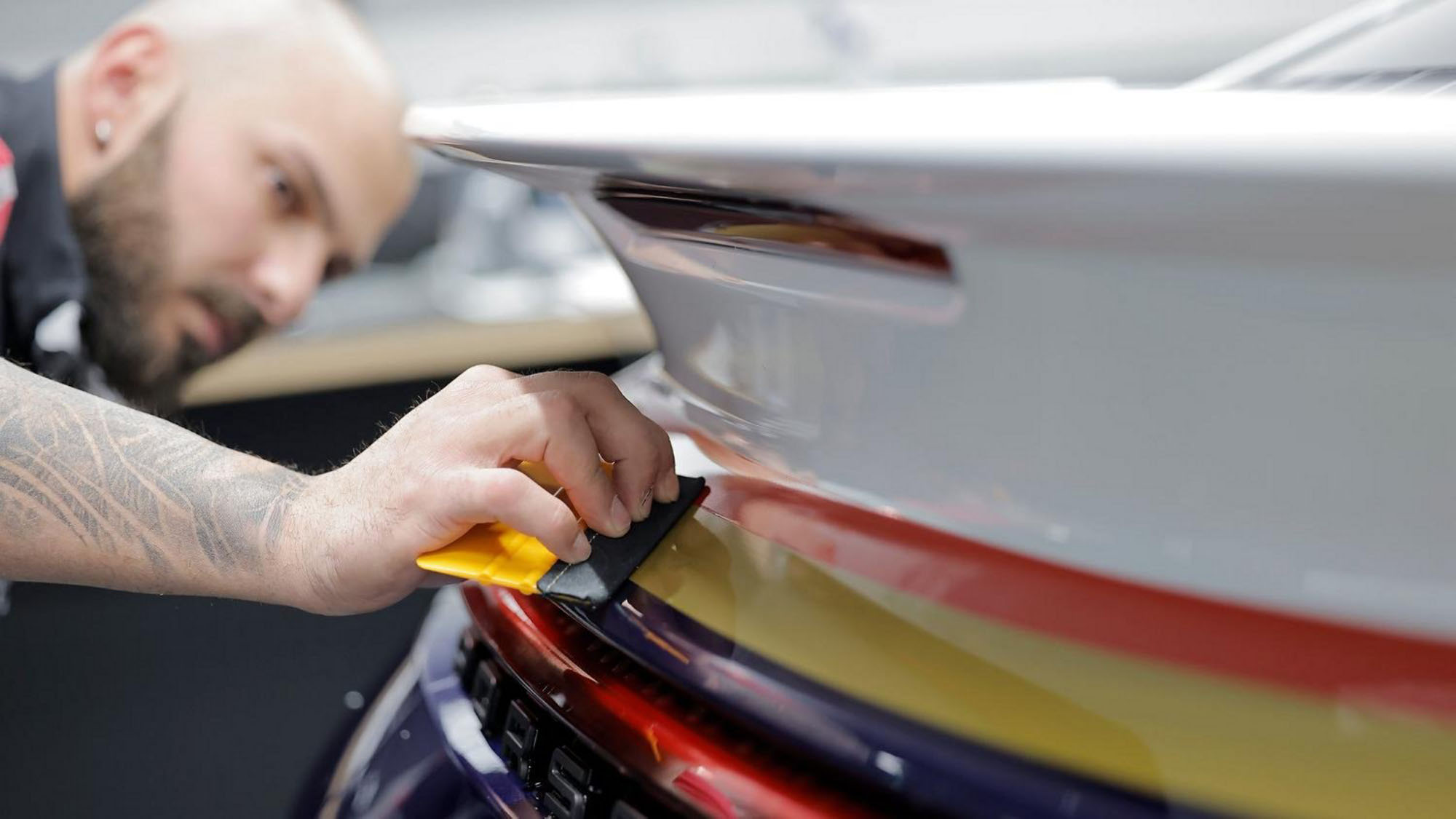
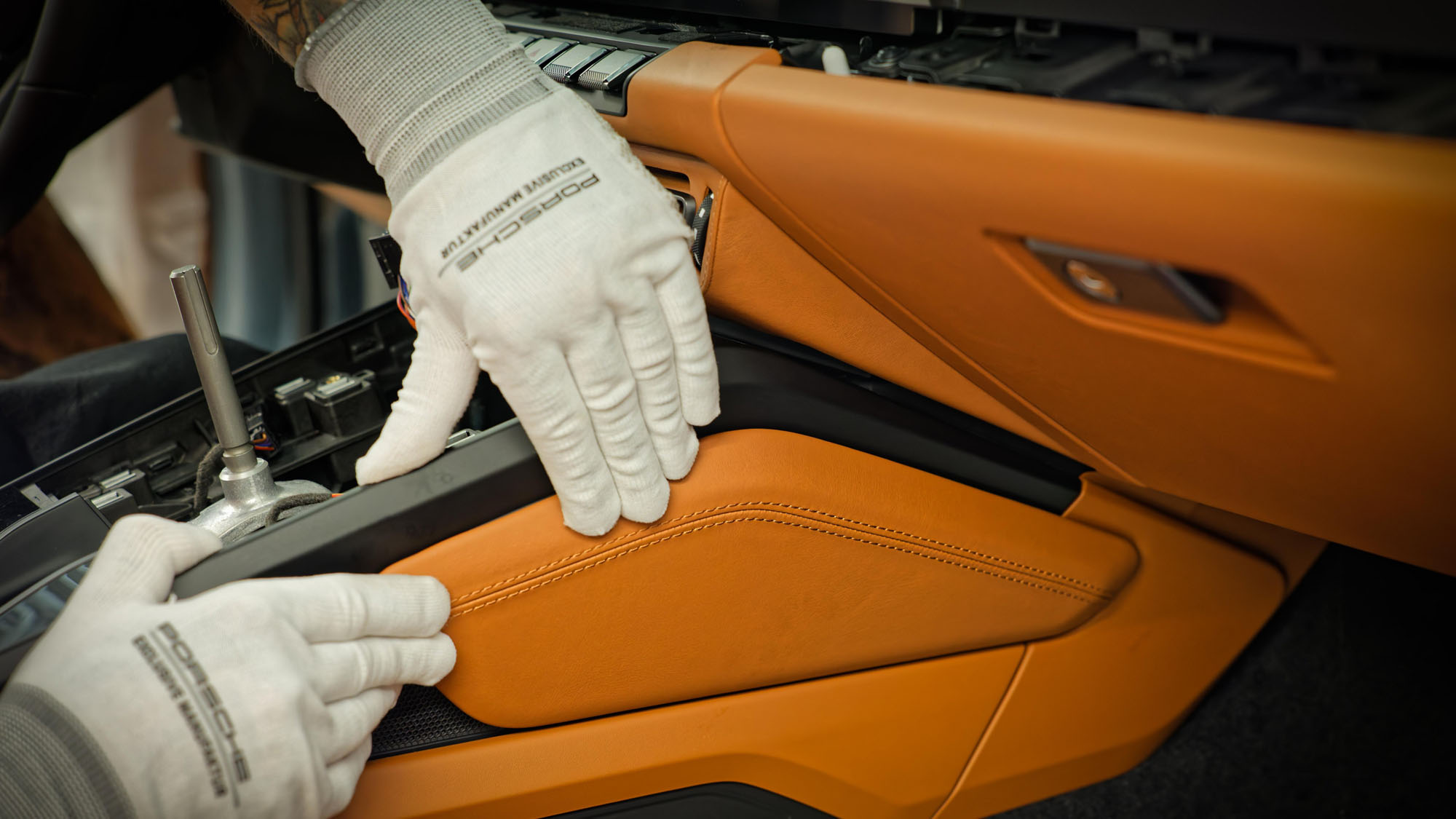






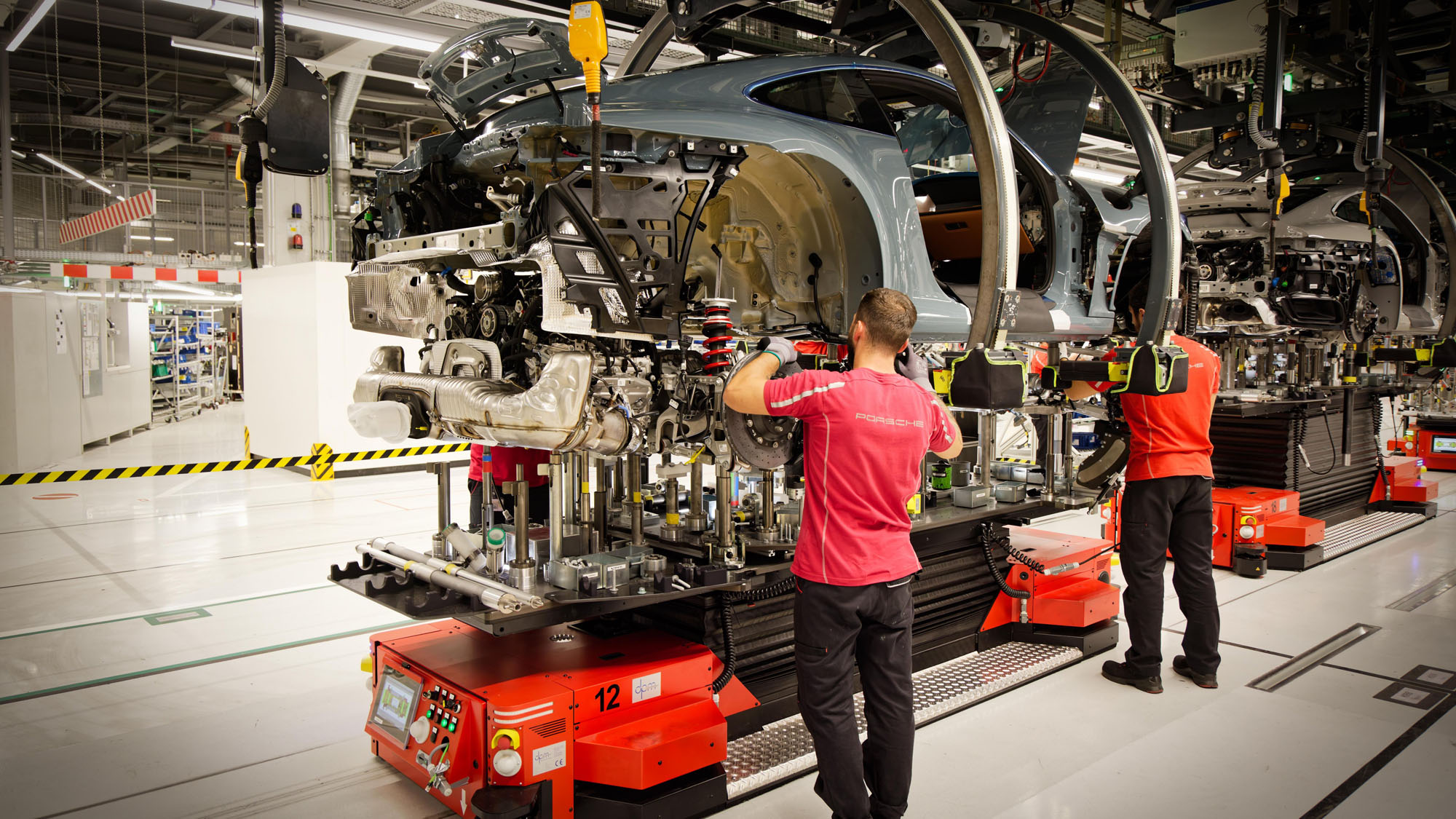
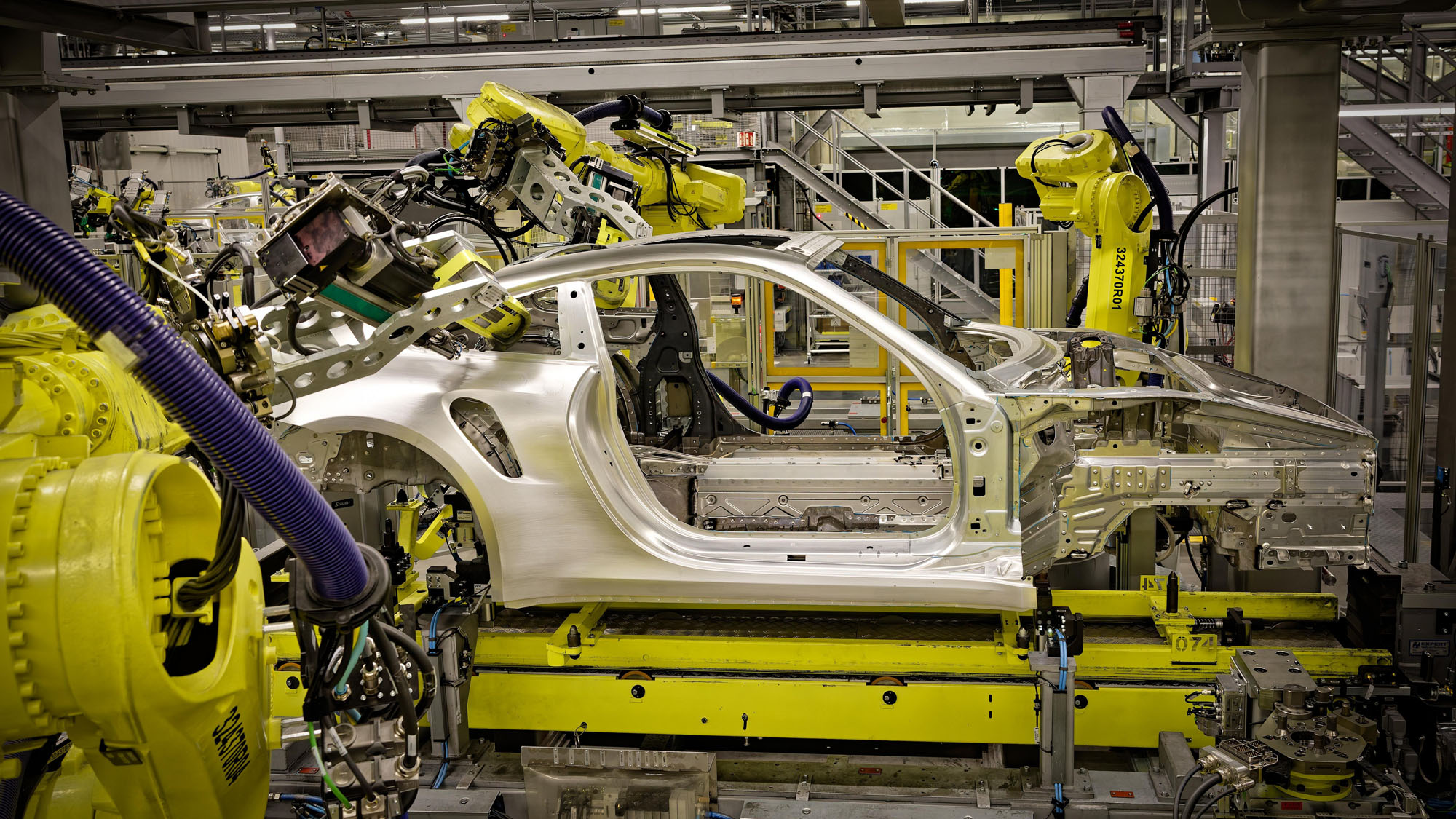
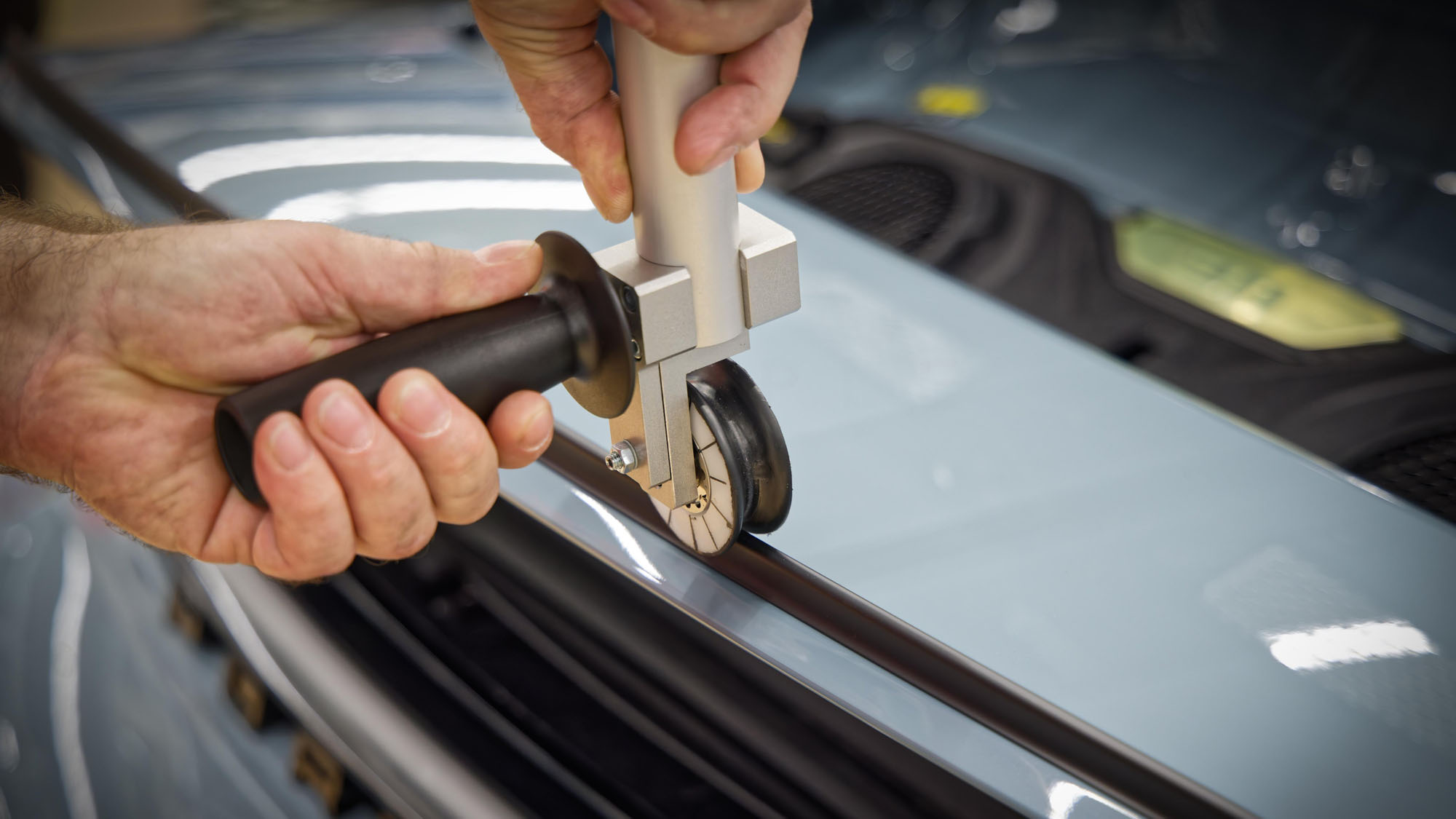

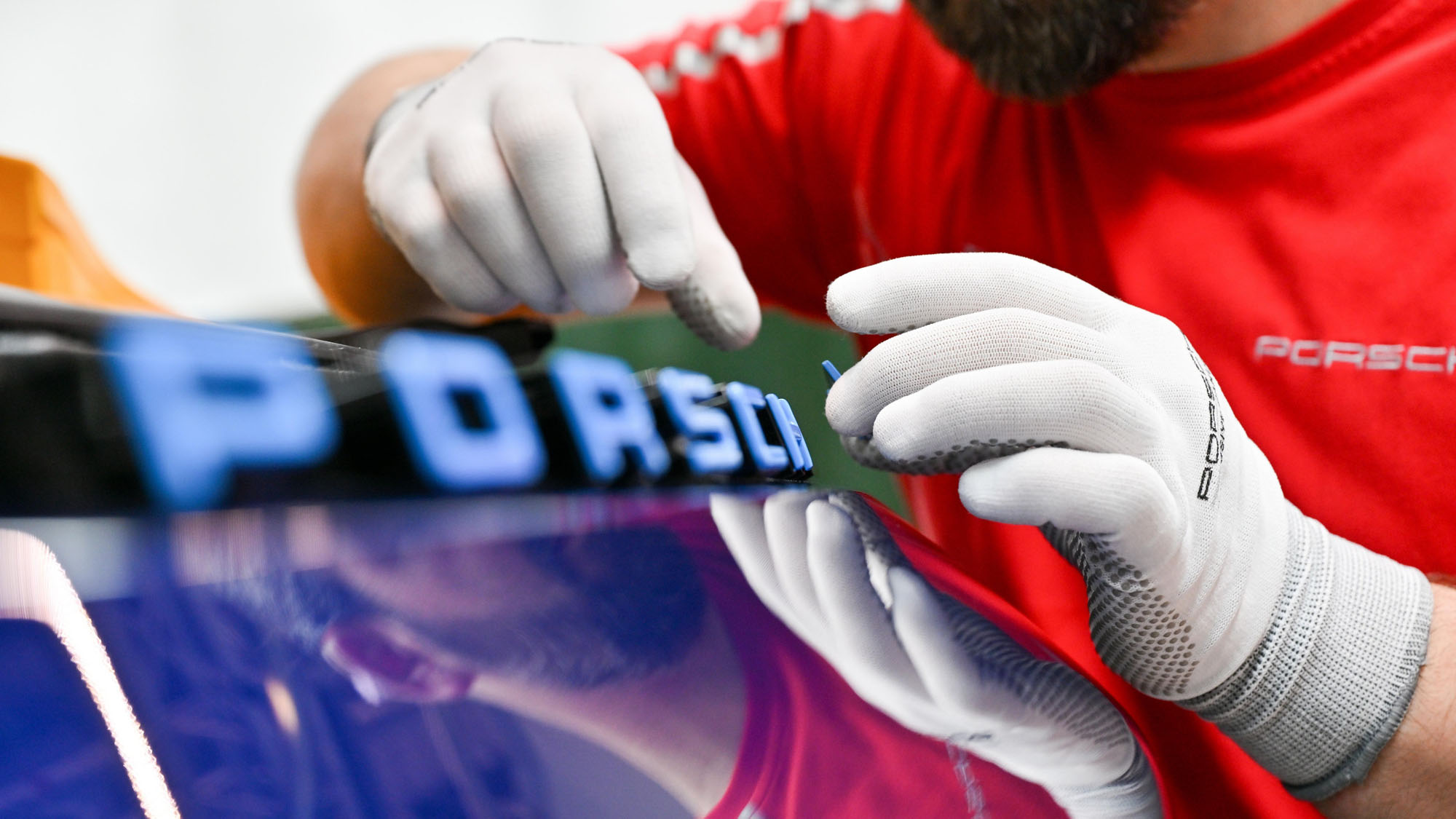

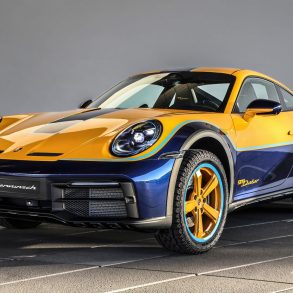
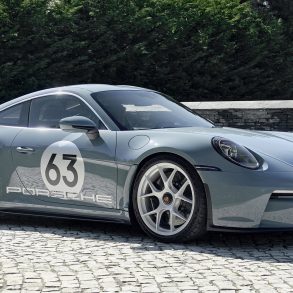

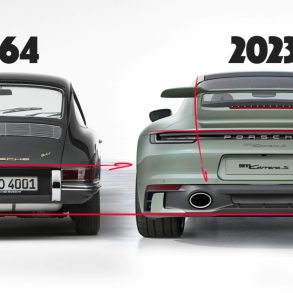


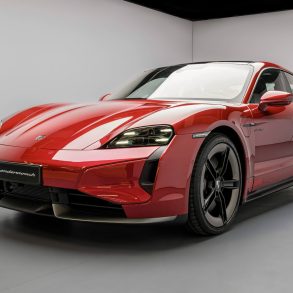

I would love to see manufacturing pictures and writeups from the 70s and 80s Cheers John
0